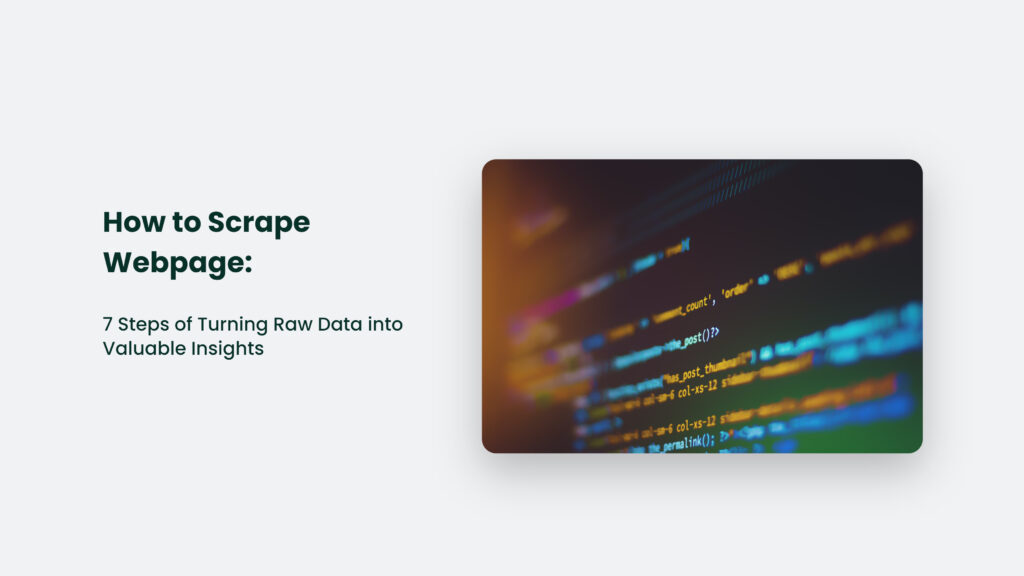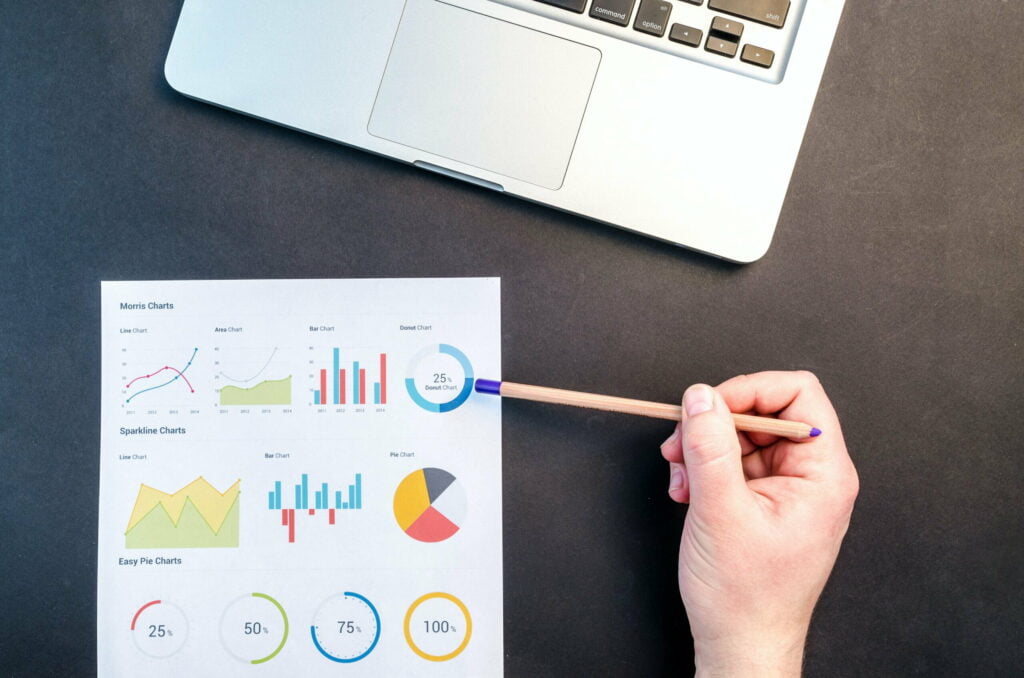Web scraping is like being a digital spider, crawling through the interwebs and collecting information like a hoarder at a garage sale. It’s like sneaking into someone’s yard to steal their fruit, except you’re taking data instead of fruit. With web scraping, you can snatch up everything from product prices to weather forecasts without leaving your computer. It’s like magic, but with fewer rabbits and more code. So put on your spider senses and get ready to learn how to scrape webpages.
Learn more about how to scrape webpages by watching the video shared below:
Why is web scraping important?
Web scraping is a valuable tool that allows individuals and businesses to extract precious nuggets of data from the endless sea of information on the internet. It can reveal valuable insights for market research, trend monitoring, and more.
Plus, it can automate tedious tasks and save precious time. But beware, the rules of the web must be respected, and data must be used ethically and responsibly. Let’s dive into the vast ocean of data, but let’s do it with respect and care for the websites we scrape.

How to scrape webpage: Techniques

It’s like a candy store of scraping techniques; pick your favourite flavour and extract! Just remember to brush your data before bed. Below are a few web scraping techniques:
Here are different web scraping techniques:
- HTML parsing: Extracting data by parsing the HTML code of a website using programming languages such as Python or JavaScript.
- Web API: Accessing structured data through an API provided by a website.
- Web scraping tools: Extract data from complex websites using Octoparse or ParseHub.
- Browser extension: Extracting data directly from a browser using extensions like Data Miner or Web Scraper.
- Headless browser: Automating web scraping tasks using a headless browser without a user interface.
- Machine learning: Automatically extracting data from websites using machine learning algorithms.
How to scrape webpage: Step-by-step instructions for extracting data from a sample website
Here are step-by-step instructions for removing data from a sample website:
- Choose a website to scrape: For this example, let’s use ‘http://quotes.toscrape.com/‘, which contains a collection of famous quotes.
- Inspect the website: Right-click on the page and select ‘Inspect’ to open the browser’s developer tools. This will allow you to view the website’s HTML code.
- Identify the data to extract: In this case, we want to remove the quoted text and author name from each quote on the page.
- Write a scraping script: Write a script to extract the desired data using a programming language such as Python. The hand should use HTML parsing techniques to extract the data from the website’s HTML code.
- Execute the scraping script: Run the script and watch as it extracts the data from the website. You can save the data to a file or database for further analysis.
- Clean and analyze the data: Once extracted, clean and interpret it as needed. This may involve removing duplicates, formatting the data, or visualizing it in a chart or graph.
- Repeat for other websites: You can use the same technique to extract data from other websites. Just modify the script to suit the website’s HTML structure and the data you want to remove.
Remember to respect the website’s terms of service and copyright laws when scraping data. Happy scrapping!
Cleaning and processing scraped data
Here’s a step-by-step guide to cleaning and processing scraped data:
- Assess the damage: Look at the raw data you’ve scraped and try not to panic. It’s like looking at a pile of dirty laundry – overwhelming at first but doable.
- Remove duplicates: Use your favourite tool or technique to identify and remove duplicate records. It’s like playing a game of whack-a-mole, except with data.
- Fill in the blanks: Identify any missing data and use imputation techniques to fill in the gaps. It’s like completing a jigsaw puzzle, but you can make up the missing pieces.
- Standardize formats: Convert data formats such as dates or units of measurement to a standard format. It’s like getting everyone to speak the same language, except with data.
- Filter the noise: Identify and remove any outliers or errors in the data. It’s like playing a game of “one of these things is not like the other,” except with data.
- Make it pretty: Apply formatting and styling to make the data visually appealing and easily understood. It’s like putting a bow on a gift, except the estate is data.
- Analyze and draw conclusions: Use statistical analysis techniques to draw insights and findings from the cleaned data. It’s like solving a mystery, except the clues are all in the data.
- Celebrate your success: Pour a glass of your favourite beverage and bask in the glory of your cleaned data. It’s like crossing the finish line of a marathon, except with data.
Applying insights from scraped data
Here are some points for applying insights from scraped data:
- Identify the cream of the crop insights: sift through your data analysis and pull out the most delicious insights. It’s like panning for gold, except you’re mining for data.
- Whip up some actionable recommendations: use those insights to cook up some tasty suggestions for your business or organization. It’s like making a fancy recipe but with data.
- Share your findings like a hot potato: get your findings in front of the people who matter most by creating a report or presentation. It’s like sharing a batch of freshly baked cookies; instead of cookies, it’s data.
- Keep an eye on things: monitor your progress like a watchful hawk, using metrics like sales or website traffic to measure the impact of your recommendations. It’s like watching a cooking show to see if your dish turned out right.
- Keep improving: use those insights to inform future web scraping projects and improve your data collection and analysis processes over time. It’s like refining your cooking skills so you can make even better dishes in the future.
- Play fair: be ethical and transparent when using data insights for decision-making. Don’t be a data bully; share the wisdom with everyone who can benefit. It’s like sharing a slice of pizza with your friends, but instead of pizza, it’s data.
Ethical considerations in web scraping
Web scraping can raise ethical concerns, especially when collecting personal or sensitive information. To ensure ethical web scraping, keep the following points in mind:
- Respect website terms of service.
- Avoid collecting private or sensitive information.
- Obtain consent if necessary.
- Do not disrupt website functionality.
- Attribute data sources.
- Be transparent about data collection.
Following ethical practices, web scraping can be a valuable data collection and analysis tool.
In a nutshell
So, remember, folks: web scraping can be a great way to uncover hidden data treasures, but with great power comes great responsibility! And if you ever feel overwhelmed by the sheer amount of data you’ve collected, just take a deep breath and remember: you’ve got this! Now that you know how to scrape webpages, always be ethical, play fair, and respect the web you scrape.
Is web scraping legal?
The legality of web scraping depends on the website and the purpose of the scraping. Some websites may have terms of use or copyright restrictions that prohibit web scraping, while others may allow it. Researching the website’s policies and seeking legal advice if you need clarification is essential.
What are the risks of web scraping?
The risks of web scraping include potential legal issues, ethical concerns, and technical difficulties. It’s important to use web scraping responsibly and ethically and to be aware of any potential risks or limitations before beginning a scraping project.
What are some common data sources that can be scraped from webpages?
Common data sources that can be scraped from webpages include text, images, tables, links, and metadata such as page titles and descriptions.




